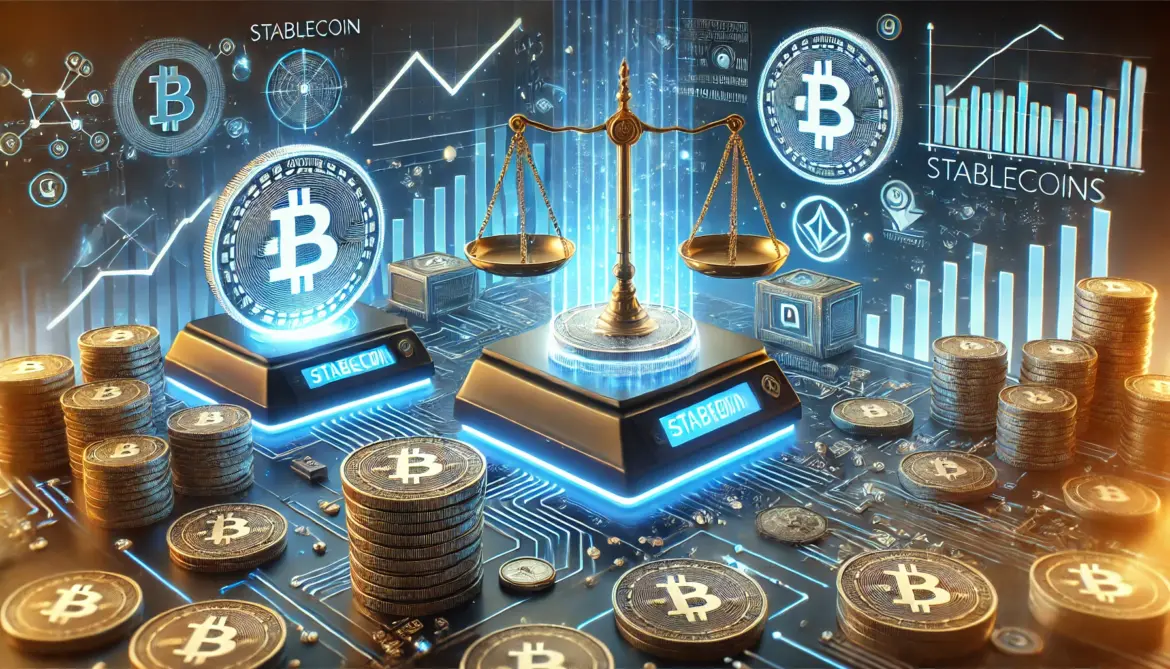What Are Stablecoins and Why Are People Using Them More?
If you know about cryptocurrencies, you’ve heard of stablecoins. But what are they, and why do more people use them? Unlike Bitcoin or Ethereum, which change in value a lot, stablecoins keep their value steady. In a market full of price changes, this steadiness makes them handy for buying things and planning investments. Let’s look at what stablecoins are how they work, and why they’re changing how we use crypto.
What Are Stablecoins?
Stablecoins are cryptocurrencies that try to keep their price steady by linking to stable assets. Unlike Bitcoin and other traditional cryptocurrencies that can see big price swings, stablecoins keep a steady value. They often tie themselves to something reliable, like the US dollar or even gold. This link to stable assets helps stablecoins avoid major value changes, which makes them more reliable.
How Do Stablecoins Work?
Stablecoins keep their value because real-world assets back them up. However different types of stablecoins use different methods to do this:
- Fiat-Collateralized Stablecoins: These stablecoins have traditional fiat money, like the US dollar, as backing. Each stablecoin in circulation has an equal amount of fiat currency in reserve. This one-to-one backing helps the coin keep its value. Well-known examples include Tether (USDT) and USD Coin (USDC).
- Crypto-Collateralized Stablecoins: Other cryptocurrencies such as Ether back these stablecoins. To fight the ups and downs of cryptocurrencies, they often have more value locked up in reserves than the stablecoin is worth. This is called over-collateralization. Dai (DAI) stands out as a prime example of this type.
- Algorithmic Stablecoins: Unlike fiat or crypto-collateralized stablecoins algorithmic stablecoins don’t have any physical assets backing them up. They depend on algorithms to control the coin supply and keep its value stable. This approach makes them a little more speculative and risky, but they still play a key role in the market.
Why Are Stablecoins Popular?
Stablecoins have gained popularity for a few key reasons:
- Stable Value: Stablecoins have a big plus: their price doesn’t change much. Bitcoin and Ethereum can go way up or way down, but stablecoins stay pretty much the same. This makes them great to spend or save.
- Fast and Cheap Transfers: Stablecoins shine when it comes to quick low-cost money moves. This is super helpful for sending money across borders where old-school transfers can take ages and cost a fortune.
- Crypto Trading: Crypto traders love stablecoins because they help dodge market ups and downs. By keeping cash in stablecoins, traders can shield their money from big price swings. At the same time, they can switch back to other cryptos when the market looks good.
- DeFi (Decentralized Finance): Stablecoins play a key role in the decentralized finance world. People use them to lend, borrow, and earn interest without the worry of price swings common in other cryptocurrencies.
Stablecoins’ Impact on the Crypto Market
Stablecoins have a big effect on how the crypto market is changing:
- Wider Adoption: Stablecoins help regular folks use digital money without worrying about sudden price drops. This builds a bridge between old-school banking and the crypto world.
- Cross-Border Payments: Stablecoins are causing a revolution in sending money overseas. They’re quicker and less expensive than old methods like bank transfers offering a better way to move cash across countries.
- Regulatory Focus: As more people use stablecoins, governments worldwide are paying close attention to control them. Rule-makers aim to make sure these coins are used and give users the openness and safety they need.
- Central Bank Digital Currencies (CBDCs): Stablecoins have done well, which has gotten many central banks thinking about making their own digital money. These would work a lot like stablecoins, but the banks themselves would control and give them out.
Challenges Facing Stablecoins
Stablecoins offer many benefits, but they also face several hurdles:
- Regulation: The growing popularity of stablecoins has caught the attention of governments. They’re now looking to implement stricter rules. These regulations will focus on boosting transparency enhancing security, and stopping any misuse of the technology.
- Centralization: Central entities or companies control some stablecoins. This goes against the decentralized nature of cryptocurrencies. Such centralization has sparked worries about who’s in charge and how they’re held accountable.
- Algorithmic Risks: Algorithmic stablecoins can struggle to maintain their value. If the algorithm doesn’t perform as expected, the coin might lose its peg and become unstable.
What’s Next for Stablecoins?
Looking ahead, stablecoins will have a bigger impact on the financial world. As DeFi grows and people keep wanting quick cross-border payments, stablecoins will probably keep expanding. But their future hinges on how regulators decide to handle them and how central banks choose to roll out their own digital money.
To wrap up, stablecoins are shaking up our ideas about money and payments in the digital era. They offer a steady, quick, and cheap way to move money making cryptocurrencies more user-friendly and practical for regular folks. As the market grows up and rules change, stablecoins will keep shaping how finance works in the future.apt to the growing use of digital currencies.
